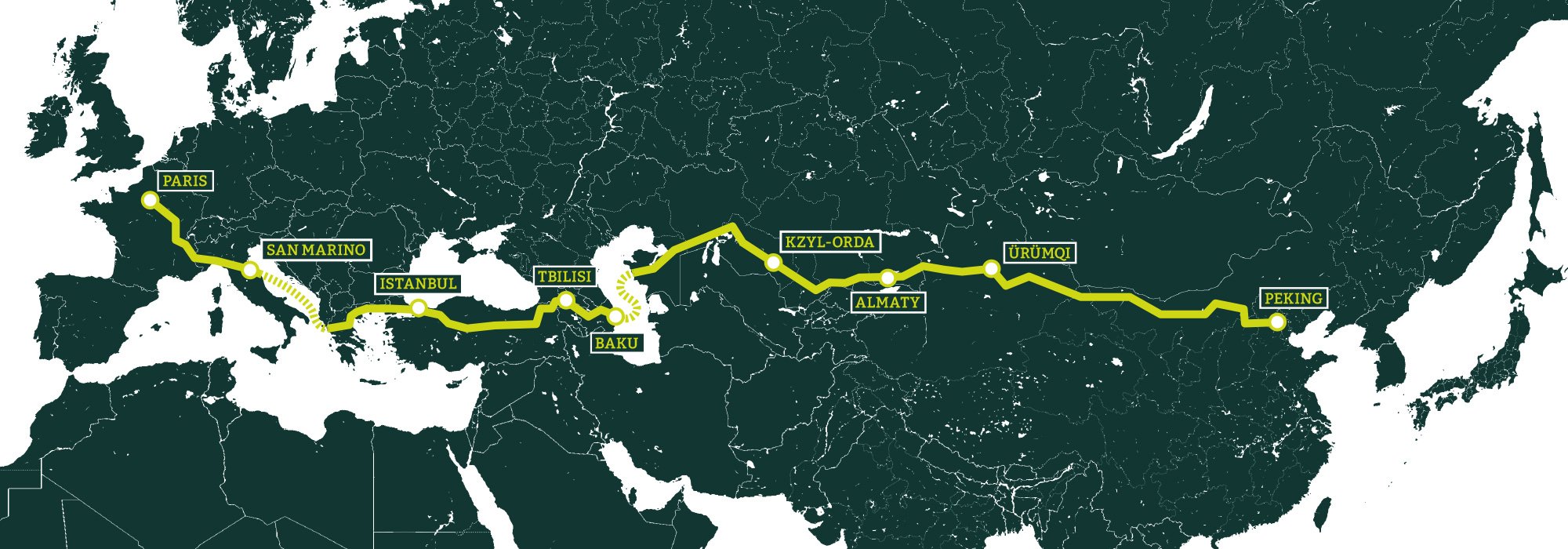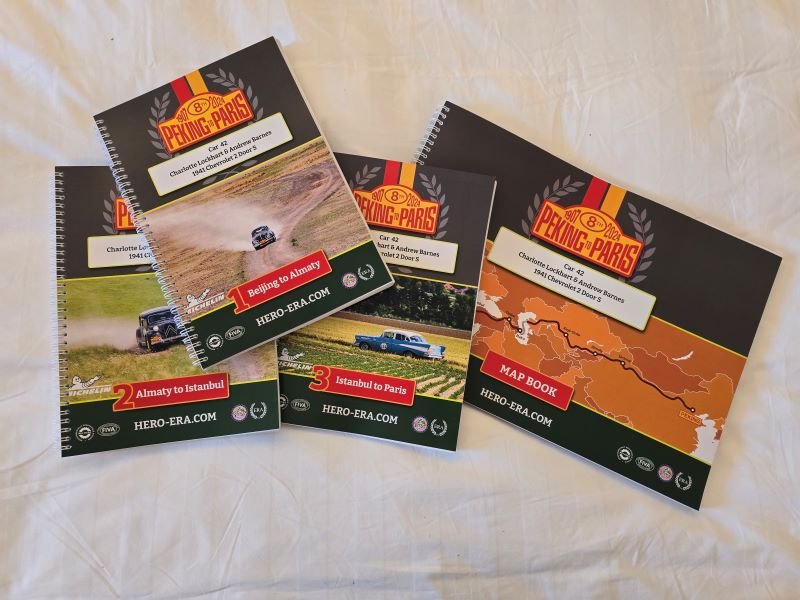Navigation - how to get to Paris!
It is the Peking TO Paris motor challenge and this means you need to ensure you have your navigation right. This is Andrew’s job. My job is to ensure I drive us and manage the car in a way that it remains on the road and roadworthy. Andrew has to ensure we follow the route well, and maintain the time checks for the beginning and end of the day, and the various tests along the way.
Andrew is definitely the right person for the job. His years in the navy and sailing have given him a great sense of direction, so he is a safe pair on hands in the desert.
We have a number of tools for this.
Map and Route Books
We are provided with a large map book which gives us the route in a general form at a small scale and three route books. These break down each days instructions. Each day there are a number of changes depending on what the advance car has found the day before.
In the cities and sealed roads we use a method of navigation called tulip maps. These are basically arrows showing you where to go when you get to a certain point and/or with distance measures between the two points and also as a running total. We use a device called a monit so help us measure the distance between instructions and the total distance for the section. Each time you reach a point, you click the monit button and it resets the counter like a trip meter.
Each evening, Andrew will mark up the book with notes and he uses a highlighter to ensure it is easy to see the instruction and not miss a turning or mis-read it when it is hectic or we feel under pressure.
You are not allowed to use digital map apps, thought I’m pretty sure some people do. Anyway, they are not a lot of use, because the route is not usually the most direct route. We weave in and out and head sideways, often we are heading for a place we do a time trial, and there are timing points along the way, so if you think you will take a different route to get somewhere faster, you many well miss the checkpoint. In addition to this, while speed is required, accuracy in navigation is more important. And you lose more points for being early than you do for being late.
Also, in the route books are “OK” and “SOS” signs. You put an OK sign up if you are on the side of the road and are fine. You use the SOS if you have a medical emergency, it means you can be helping the injured, without worrying about having to flag anyone down.
The route books are backed up and used with Monits and a Garmin.
Below is a picture of the dash. The monits are the two displays one above the other, and the garmin is the screen below to the right. They are exclusively the domain of the navigator.
The Monit
The monits (we have two). As mentioned above, they help us determine the distance between two points. They are the piece of equipment we use the most often. They have the digital counter and a clicker attached via a wire with two buttons, one to reset the distance counter and the other which resets overall counter. It can be important to make sure you click the right one at the right time, otherwise you are doing maths on the fly until you have enough time to manually reset the whole thing.
The Garmin
In the desert it is a different matter. We are generally, or certainly we did last time, following desert tracks which are used by the locals. Some of them can actually be quite busy, not just shepherds with their flocks of goats, but trucks, buses and cars. But on the whole they are quiet and you need to take care. You can find yourself on a plain with a dozen paths, some of which will have a sand bog you can get stuck in.
The navigation here is with a garmin, a digital, satellite compass, going waypoint to waypoint. These are programmed ahead of time so we just have to look to go in the right direction. However, it’s not a case of just heading directly for the waypoint, sometimes there will be a valley, a mountain, a river or some other obstacle. Andrew’s sense of direction and navigation experience certainly come into their own at this point.
You can watch all about navigating on our YouTube channel, where Andrew gives you a good run down of his process here.
© Charlotte Lockhart 2024. All rights reserved.





